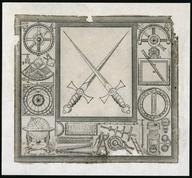

Pale brown/cream observation of the Sun, 18 November 1883
- Made:
- 1883 in Folkestone
![Drawings. [Observations of the Sun and Jupiter] / J.W](https://coimages.sciencemuseumgroup.org.uk/30/866/medium_2001_0769_0047.jpg)
Pale brown/cream observation of sunspots made by John Willis on 18 November 1883 at 12. On the reverse Willis has noted: "This was one of the finest views of the sun I have ever had. The "rice grains" towards the edges were very distinct, and some of the faculae very large and exceedingly well defined. I used the full aperture of 3 inches, with a power of about 35. JW. 18.11.83." Rice grains refers to the very fine structures seen on the face of the sun that were first discovered by James Nasmyth and called willow pattern by him. Faculae are areas of greater brightness on the Sun that are hotter; sunspots are cooler. One of 275 pencil, ink and colour wash observations of the Sun and Jupiter made by Willis in Folkestone between 1879 and 1906.
Details
- Category:
- Art
- Object Number:
- 2001-769/47
- Materials:
- paper, pencil, ink, col. wash
- Measurements:
-
overall: 144 mm x 165 mm
- type:
- drawing
- credit:
- Sotheby's (Olympia)




